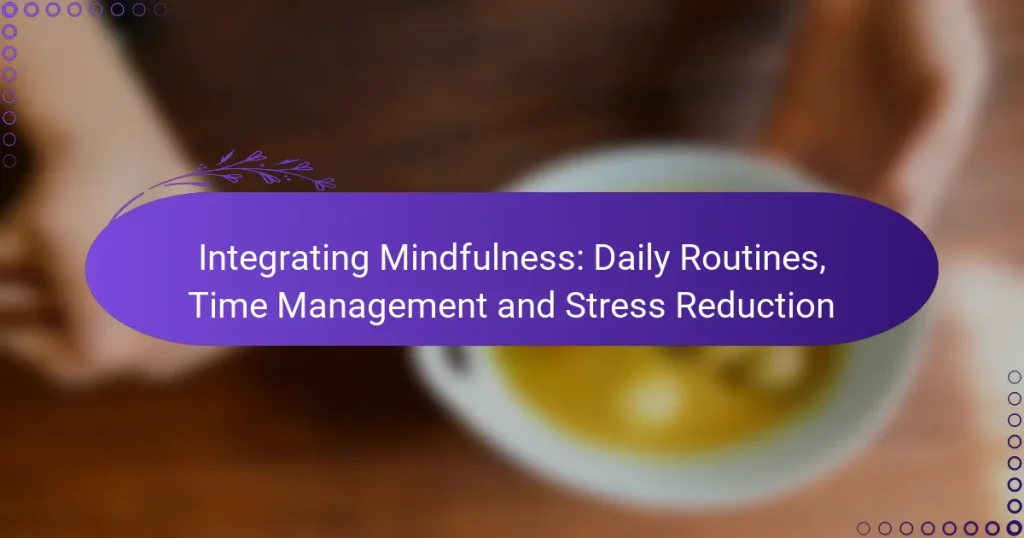Integrating mindfulness into daily routines can transform the way individuals navigate their busy lives, particularly in fast-paced environments like New York City. By adopting mindfulness practices, people can enhance their focus, improve time management, and effectively reduce stress, leading to greater overall well-being and productivity. Techniques such as the Pomodoro Technique and time blocking further support this integration, allowing for structured work periods that foster engagement and minimize distractions.
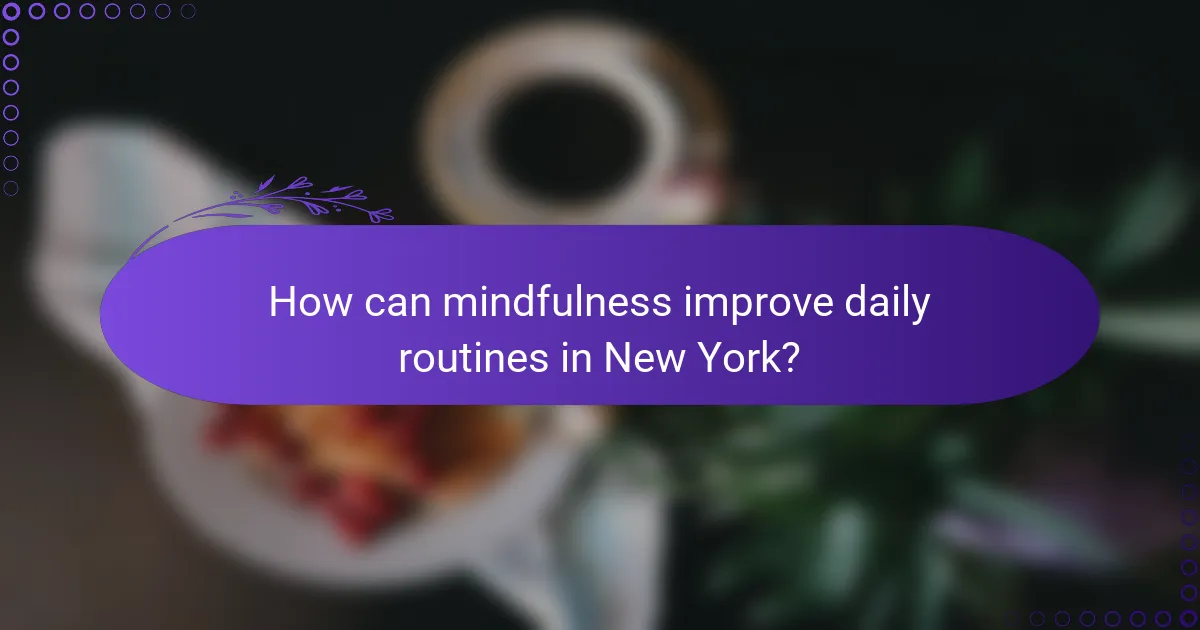
How can mindfulness improve daily routines in New York?
Mindfulness can significantly enhance daily routines in New York by promoting focus and reducing stress. By incorporating mindfulness practices into everyday activities, individuals can improve their overall well-being and productivity amidst the city’s fast pace.
Morning mindfulness practices
Starting your day with mindfulness can set a positive tone for the hours ahead. Consider dedicating 5-10 minutes to meditation or deep breathing exercises as soon as you wake up. This practice can help clear your mind and prepare you for the challenges of the day.
You might also try mindful stretching or yoga, which can energize your body while fostering a sense of calm. Simple routines like focusing on your breath or being aware of your movements can enhance your morning experience.
Mindful commuting strategies
Commuting in New York can be stressful, but mindfulness can transform this time into a period of reflection. Whether you’re on the subway or walking, practice being present by observing your surroundings and focusing on your breath. This can help reduce anxiety and improve your mood.
Listening to calming music or guided mindfulness podcasts during your commute can also enhance your experience. Aim for short sessions that allow you to engage with your thoughts without distraction, making the commute feel less burdensome.
Evening reflection techniques
Ending your day with mindfulness can aid in processing experiences and preparing for tomorrow. Spend 5-10 minutes reflecting on your day, either through journaling or quiet contemplation. Focus on what went well and what you learned, which can foster a sense of closure.
Consider creating a gratitude list each evening, noting three things you appreciated during the day. This simple practice can shift your mindset towards positivity and help you unwind before sleep.
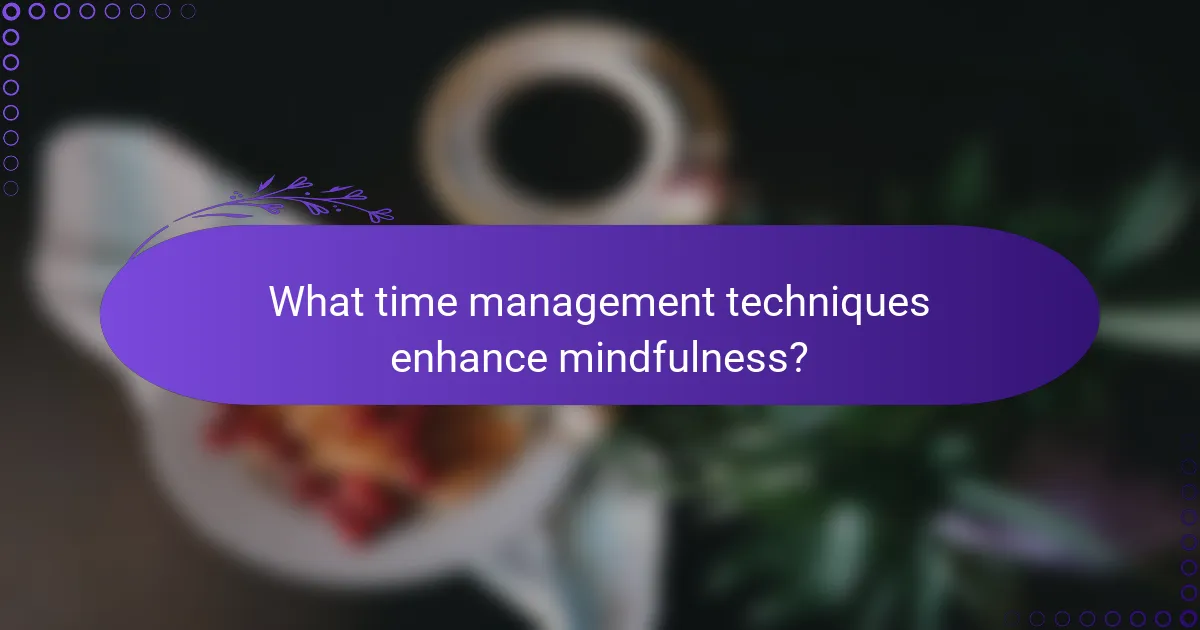
What time management techniques enhance mindfulness?
Effective time management techniques can significantly enhance mindfulness by promoting focused attention and reducing stress. Techniques like the Pomodoro Technique and time blocking encourage structured work periods, allowing individuals to engage fully with their tasks while minimizing distractions.
Pomodoro Technique with mindfulness
The Pomodoro Technique involves working in short, focused bursts of typically 25 minutes, followed by a 5-minute break. This method encourages mindfulness by allowing you to concentrate intensely on a single task, while the breaks provide a chance to reset and reflect, enhancing overall productivity.
To implement this technique, choose a task, set a timer for 25 minutes, and work without interruption. After the timer goes off, take a short break to stretch or breathe deeply. This cycle can be repeated several times, with a longer break after four Pomodoros, promoting sustained focus and reducing burnout.
Time blocking for focused work
Time blocking involves scheduling specific blocks of time for different tasks or activities throughout your day. This technique enhances mindfulness by creating a structured environment where you can dedicate your full attention to one task at a time, minimizing multitasking and distractions.
To effectively use time blocking, start by identifying your most important tasks for the day. Allocate specific time slots for each task in your calendar, ensuring to include breaks. For example, you might block off 9 AM to 10 AM for project work, 10:30 AM to 11 AM for emails, and so on. This method helps you stay organized and focused, leading to improved efficiency and reduced stress.

How does mindfulness reduce stress in the workplace?
Mindfulness reduces stress in the workplace by promoting awareness and presence, which helps employees manage their reactions to stressors. By focusing on the present moment, individuals can decrease anxiety and improve their emotional resilience, leading to a more productive work environment.
Mindful breathing exercises
Mindful breathing exercises are simple techniques that focus on the breath to cultivate awareness and calmness. Practicing deep, slow breaths for just a few minutes can significantly lower stress levels and enhance concentration. For example, try inhaling for a count of four, holding for four, and exhaling for six, repeating this cycle for five minutes.
To incorporate mindful breathing into your workday, set aside short intervals, such as during a break or before a meeting. This practice can help reset your mental state and improve your focus, making it easier to tackle tasks with a clear mind.
Incorporating breaks for mindfulness
Incorporating breaks for mindfulness is essential for maintaining mental well-being in a busy workplace. Taking brief pauses throughout the day allows employees to recharge and reduce accumulated stress. Aim for a 5-10 minute break every hour to step away from your desk and engage in a mindfulness activity.
During these breaks, consider activities like stretching, walking, or practicing gratitude. Even a few moments of stepping outside for fresh air can enhance mood and productivity. Avoid the pitfall of skipping these breaks; they are crucial for sustaining energy and focus throughout the workday.

What are the prerequisites for integrating mindfulness?
To integrate mindfulness effectively, individuals should cultivate an understanding of its principles and set achievable goals. This foundation allows for a smoother incorporation of mindfulness practices into daily routines, enhancing time management and reducing stress.
Understanding mindfulness principles
Mindfulness is the practice of being fully present and engaged in the moment without judgment. Key principles include awareness, acceptance, and non-reactivity, which help individuals observe their thoughts and feelings without becoming overwhelmed by them.
Practicing mindfulness can be as simple as focusing on your breath for a few minutes each day or paying attention to your surroundings during routine activities. Techniques such as meditation, mindful walking, or even mindful eating can deepen your understanding and application of these principles.
Setting realistic goals
When integrating mindfulness into your life, it’s essential to set realistic and attainable goals. Start with small, manageable practices, such as dedicating five to ten minutes daily to mindfulness exercises, and gradually increase the duration as you become more comfortable.
Avoid overwhelming yourself with lofty expectations. Instead, aim for consistency over perfection. For example, if you miss a day, simply return to your practice the next day without self-criticism. Tracking your progress can also help maintain motivation and accountability.
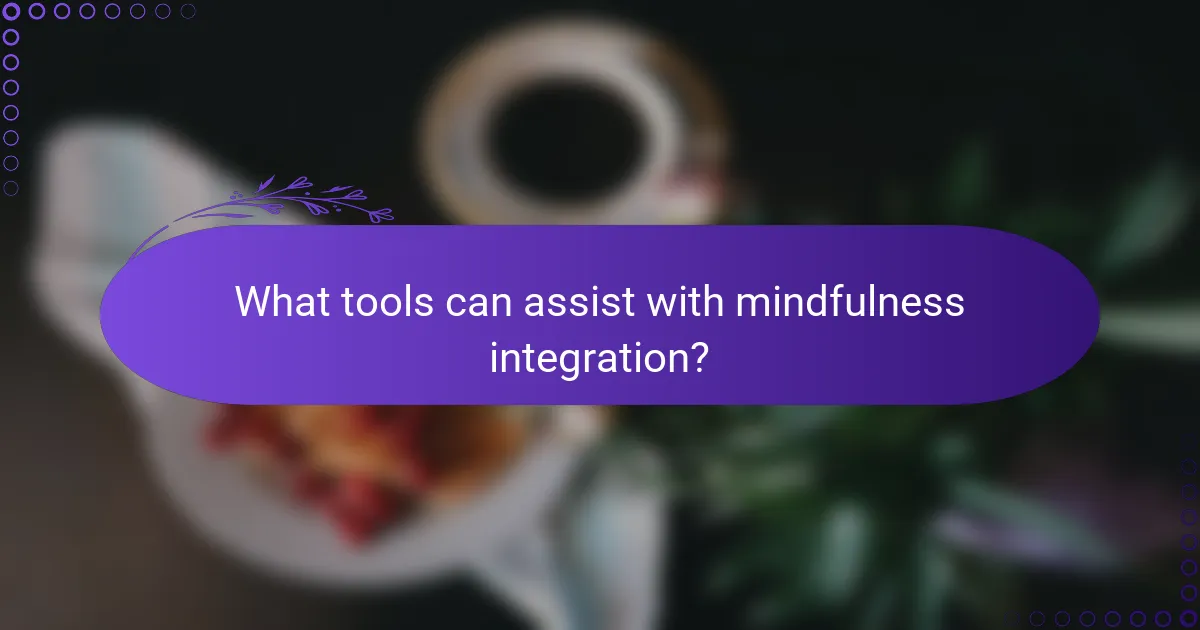
What tools can assist with mindfulness integration?
Several tools can effectively assist with mindfulness integration, focusing on meditation, relaxation, and sleep. These tools often come in the form of mobile applications designed to guide users through mindfulness practices and enhance their daily routines.
Headspace app for guided meditation
The Headspace app provides a structured approach to guided meditation, making it accessible for beginners and experienced users alike. It offers a variety of meditation sessions tailored to different needs, such as stress reduction, focus enhancement, and sleep improvement.
Users can select from short sessions of just a few minutes to longer practices lasting up to 30 minutes. The app also includes themed courses that explore specific topics, allowing users to deepen their understanding of mindfulness over time.
To maximize benefits, set aside a consistent time each day for meditation, even if it’s just a few minutes. This routine can help establish mindfulness as a regular part of your daily life.
Calm app for sleep and relaxation
The Calm app focuses on promoting better sleep and relaxation through soothing sounds, sleep stories, and meditation practices. It is particularly useful for individuals struggling with sleep issues or those looking to unwind after a busy day.
Calm offers a range of features, including guided meditations, breathing exercises, and relaxing music, all designed to help users transition into a state of calm. Sleep stories narrated by well-known voices can help ease the mind into sleep, making it a popular choice for nighttime routines.
For effective use, consider creating a bedtime routine that incorporates Calm’s features, such as listening to a sleep story or practicing a short meditation before bed. This can significantly enhance your overall relaxation and sleep quality.
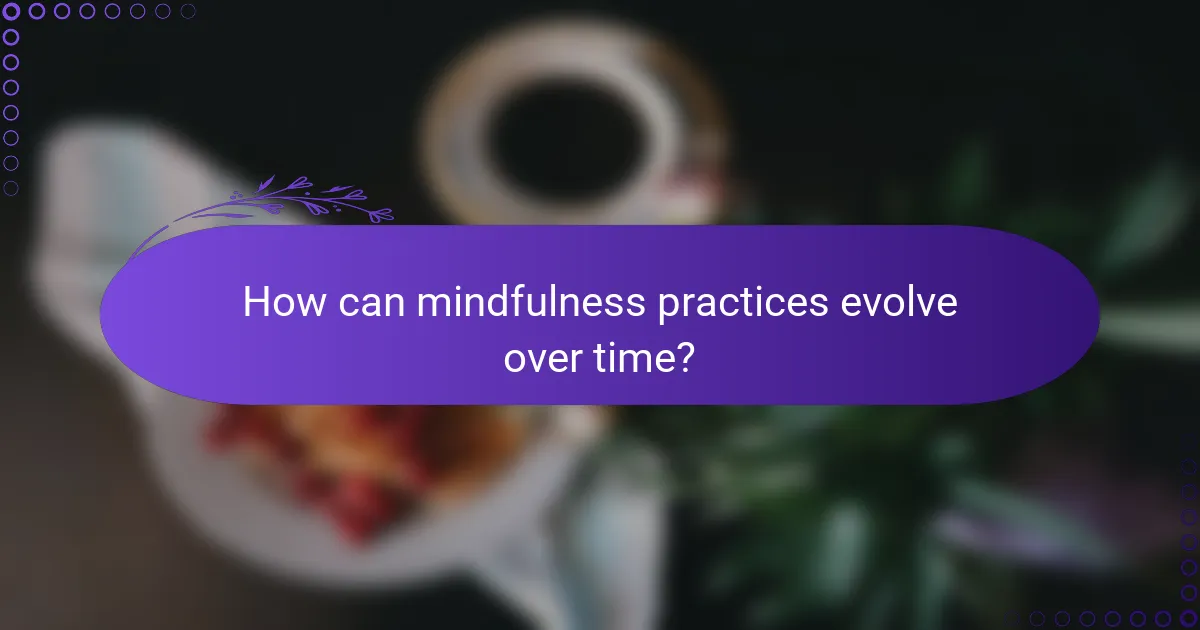
How can mindfulness practices evolve over time?
Mindfulness practices can evolve by adapting to personal growth, changing circumstances, and new insights. As individuals progress, their routines may shift to better align with their current needs and preferences, enhancing the effectiveness of their mindfulness journey.
Adapting routines for changing needs
As life circumstances change, so should your mindfulness routines. For instance, if you transition to a new job or experience a significant life event, reassess your current practices to ensure they still serve you well. This might mean adjusting the time of day you practice or the duration of your sessions.
Consider incorporating shorter, more frequent mindfulness breaks throughout your day, especially during busy periods. Techniques like mindful breathing or quick body scans can be effective and require only a few minutes, making them easier to fit into a hectic schedule.
Incorporating new mindfulness techniques
Integrating new mindfulness techniques can refresh your practice and keep it engaging. Explore various methods such as guided meditations, mindful walking, or yoga, and see which resonate with you. Experimenting with different approaches can help you discover what best supports your mental well-being.
Start by dedicating one day a week to try a new technique. For example, if you usually meditate, you might spend a day practicing mindful eating instead. This variety not only enhances your skills but also helps prevent burnout from repetitive routines.
